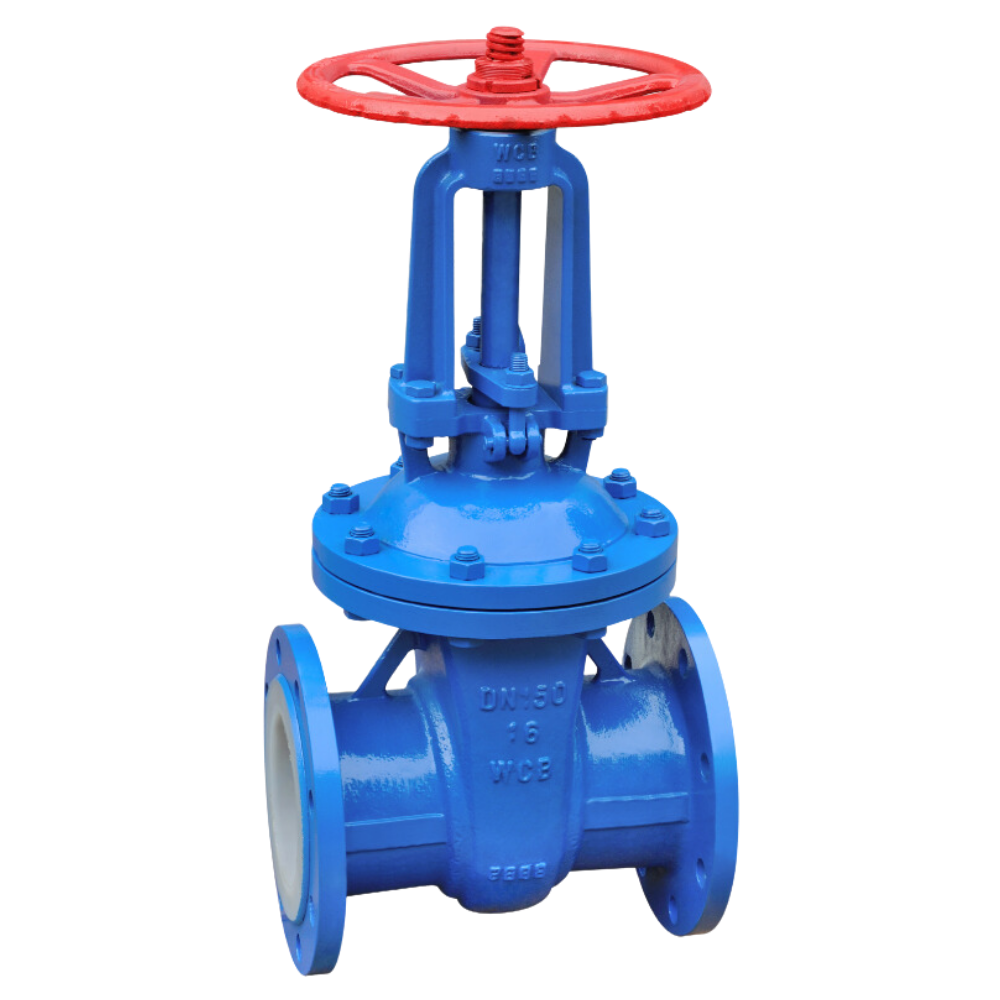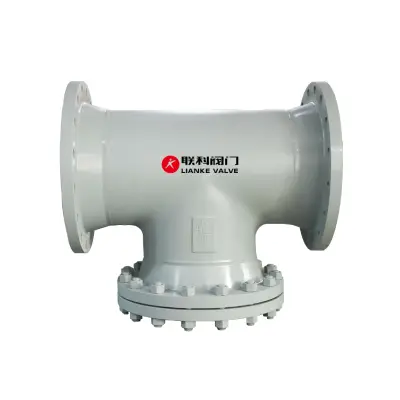

The greatest difference between a ball and butterfly valves lies in their design and flow control mechanism.
A ball valve uses a spherical ball with a hole through its center to control flow — providing a full, unobstructed passage when open and a tight seal when closed.
In contrast, a butterfly valve uses a rotating disc that partially obstructs the flow even when fully open, resulting in a slight pressure drop.
This difference in design also affects their applications: ball valves are ideal for high-pressure, tight shutoff situations, while butterfly valves are more compact and cost-effective for lower-pressure systems.
Understanding the differences between a ball valve and a butterfly valve is essential to ensure the right fit for your needs.
This article provides a comprehensive comparison and explores when to use each valve type, as well as the advantages and disadvantages of both.
| Feature | Ball Valve | Butterfly Valve |
| Design | Spherical disk to control flow | The rotating disk positioned in the center of the pipe |
| Size | Generally larger and bulkier | Slim and compact |
| Operation | 90-degree rotation for full open/close positions | 90-degree rotation for fluid control |
| Sealing Capability | Provides tight shutoff; minimal leakage | Moderate sealing; slight leakage possible |
| Pressure Handling | Ideal for high-pressure applications | Suited for low to medium-pressure systems |
| Flow Control | Full flow capacity when fully open | Partial obstruction of flow when open |
| Cost | More expensive | Generally cheaper |
| Maintenance | Requires less frequent maintenance | Maintenance might be needed more often |
| Common Applications | High-pressure systems, oil, and gas | Water distribution, wastewater treatment |
The answer depends on the specific application.
If you need a valve that can handle high-pressure fluids, has a tight shutoff, and requires minimal maintenance, a ball valve is a superior choice.
However, if you prioritize compact design, and cost-effectiveness, and you are operating in lower-pressure environments, a butterfly valve may be more suitable.
A ball valve is a quarter-turn valve that controls fluid flow using a pivoting, hollow, and perforated ball.
When the ball’s hole is aligned with the flow, the valve is fully open.
When the ball is rotated 90 degrees, the valve is closed.
Ball valves are known for providing a tight seal with minimal leakage, making them a go-to for systems requiring reliable shutoff.
Ball valves are most suitable for high-pressure applications where tight shutoff is required.
They are commonly used in industries like oil and gas, petrochemicals, and manufacturing.
If your system requires full flow with minimal pressure drop when the valve is open, a ball valve is the better choice.
A butterfly valve consists of a circular disc or vane that is mounted on a rotating shaft.
When the valve is closed, the disc obstructs the flow.
When open, the disc is rotated 90 degrees to allow fluid to pass.
Butterfly valves are lighter and more compact than ball valves, making them easier to install in tight spaces.
Butterfly valves are ideal for applications requiring a cost-effective solution for managing low-pressure fluids.
They are widely used in water distribution, wastewater treatment, and HVAC systems, where moderate flow control and compact design are needed.
The main advantage of a butterfly valve is its compact design and lightweight construction. This makes installation simpler, especially in confined spaces.
Butterfly valves are also more affordable than ball valves, making them a popular choice for lower-pressure systems.
One of the main disadvantages of butterfly valves is that they cannot provide the same tight shutoff as ball valves, which means that some leakage may occur.
Additionally, because the disc remains in the flow path even when fully open, they can create a slight pressure drop in the system.
Butterfly valves are best for systems that require moderate flow control and are operating at low to medium pressures.
They are frequently used in water distribution, HVAC, and wastewater treatment systems due to their compact design and affordability.
The lifespan of a butterfly valve depends on the specific application and operating conditions, but in general, they can last between 5 and 10 years with proper maintenance.
In well-maintained systems, they can perform reliably over an extended period, especially in low-pressure environments.
Yes, butterfly valves partially obstruct flow even when fully open because the disc remains within the flow path.
This creates a slight pressure drop, which might not be ideal for applications requiring full, unrestricted flow.
Butterfly valves may leak due to improper sealing between the disc and the valve seat, which can be caused by wear and tear, poor maintenance, or damage to the valve components.
Ensuring proper maintenance and regular inspections can minimize the risk of leakage.
Lianke Valve Co., Ltd, a premier valve manufacturer founded in 1982, specializes in high-quality industrial valves, including both ball valves and butterfly valves.
Certified by API, CE, and ISO standards, Lianke offers a diverse product line designed for various industrial applications.
As one of the leading butterfly valve manufacturers, Lianke ensures customer satisfaction through innovative designs, ample inventory, and global distribution.
Whether you are looking for durable ball valves for high-pressure systems or cost-effective butterfly valves for fluid control, Lianke’s expertise and customer-first approach make it the ideal choice for industrial valve solutions.
Design & Manufacture Standard: HG/T3704, GB/T12237 API 6D
Normal Diameter: DN15~DN350 1/2”~14”
Normal Pressure: 1.0MPa 1.6MPa 150LB
Temperature Range: FEP:-29℃~120℃, PFA:-29℃~180℃, PTFE:-29℃~150℃
Applicable Medium: Hydrochloric acid, Nitric acid, Hydrofluoric acid, Liquid chlorine, Sulfuric acid, and Aqua regia.
Body Material: WCB CF8 CF3 CF8M CF3M
Resources:
Ball Valves vs. Butterfly Valves

Gate valves control fluid flow in various industrial applications. They can completely stop or allow flow, depending on the valve’s position. Valves, in general, share the same function — but what makes gate valves different? This article will explore what gate valves are, how they work, their components, types, and common issues, among other important […]

In Brazil’s booming sugar industry, industrial strainers play a crucial role in ensuring clean, uninterrupted production during juice clarification, sugar syrup filtration, and the crystallization process. With sugar mills handling high-viscosity, abrasive fluids like massecuite and syrup, selecting a reliable strainer manufacturer is essential for maintaining syrup purity, minimizing downtime, and meeting hygiene standards. This […]

South Africa’s gold mining sector relies heavily on robust flow control systems that can withstand abrasive slurry and harsh tailings. Heavy-duty pinch valves play a crucial role here, offering durability, low maintenance, and resistance to extreme pressure. In this guide, we rank the Top 5 Heavy-Duty Pinch Valve Manufacturers South African mines trust for reliability. […]

Desalination facilities in Saudi Arabia face one of the most extreme operating environments—high salinity, abrasive media, and fluctuating brine discharge pressures. In this high-demand sector, pinch valves play a vital role in managing flow control for seawater reverse osmosis (SWRO) and thermal desalination processes. This guide ranks the top 5 pinch valve manufacturers for Saudi […]



